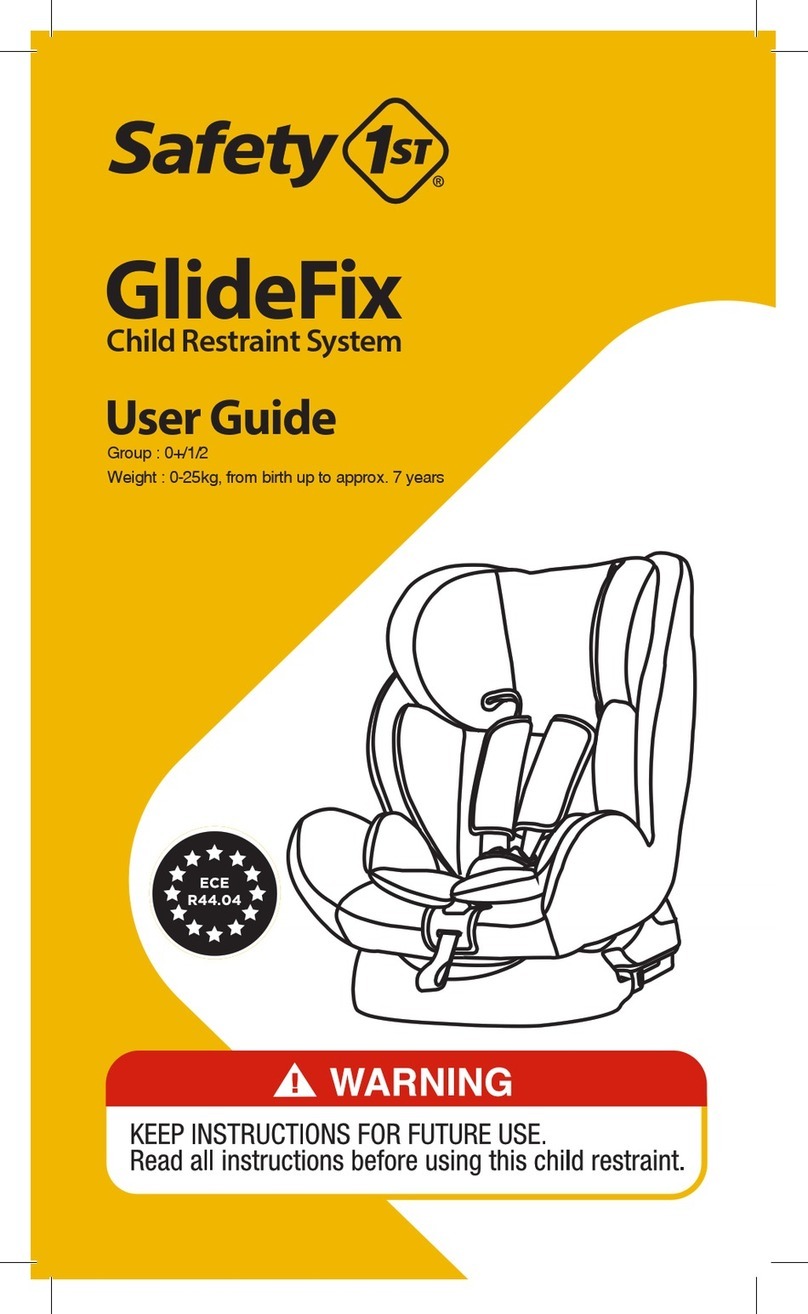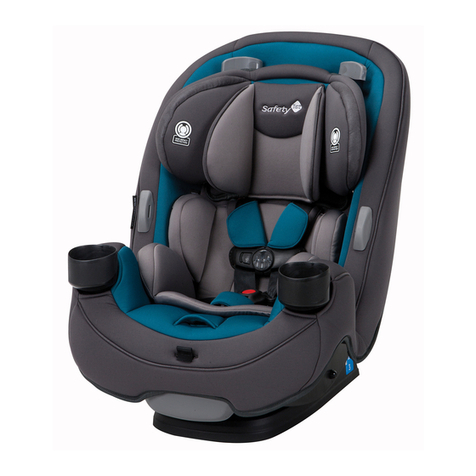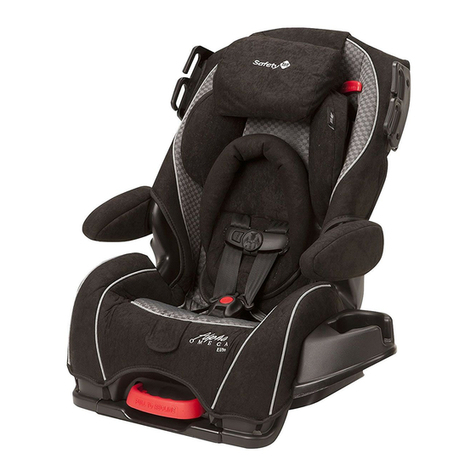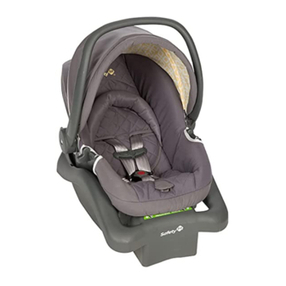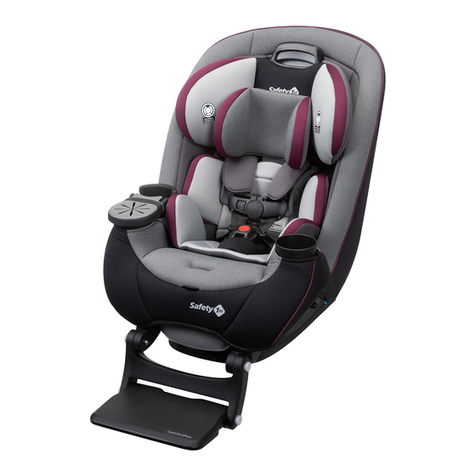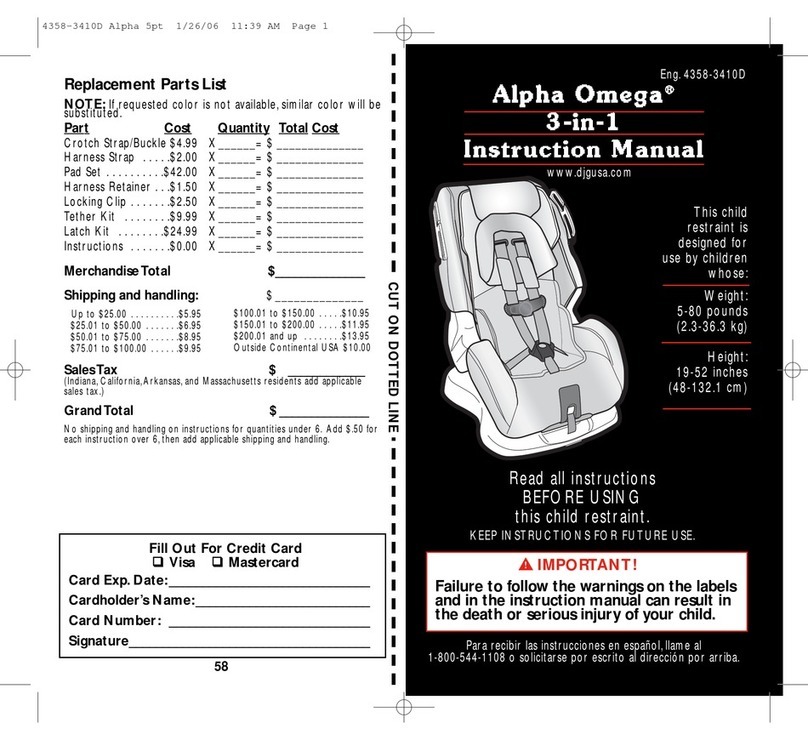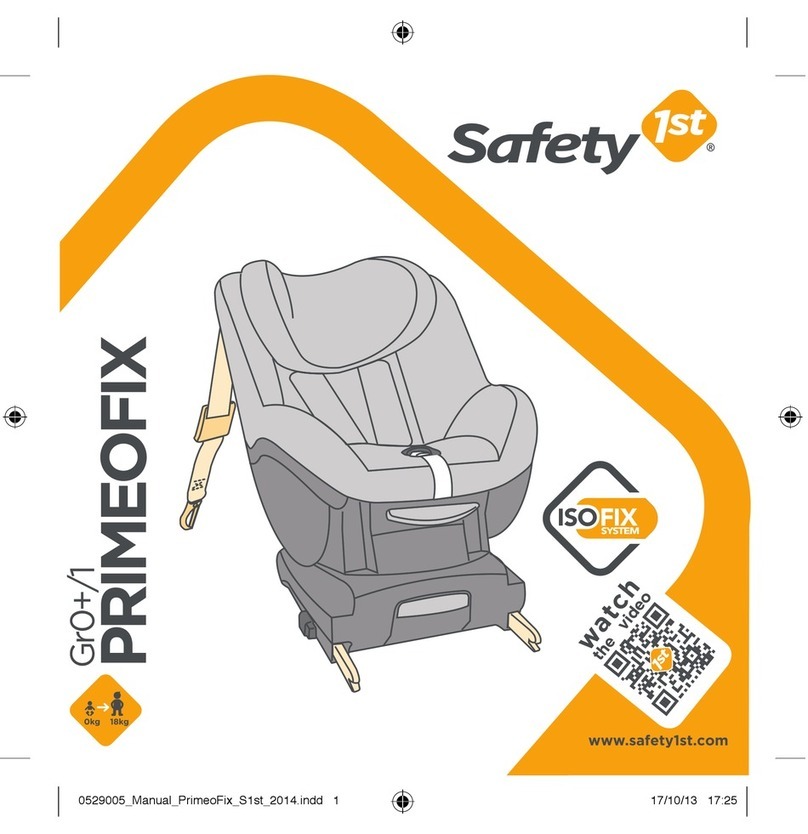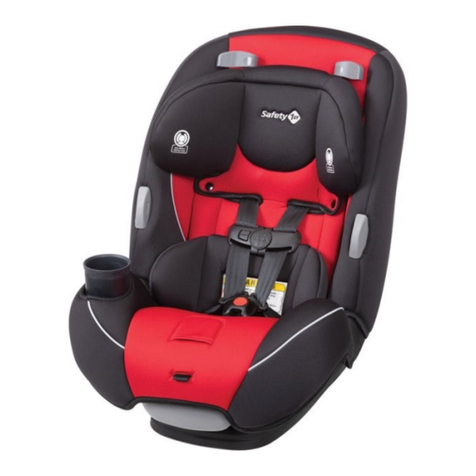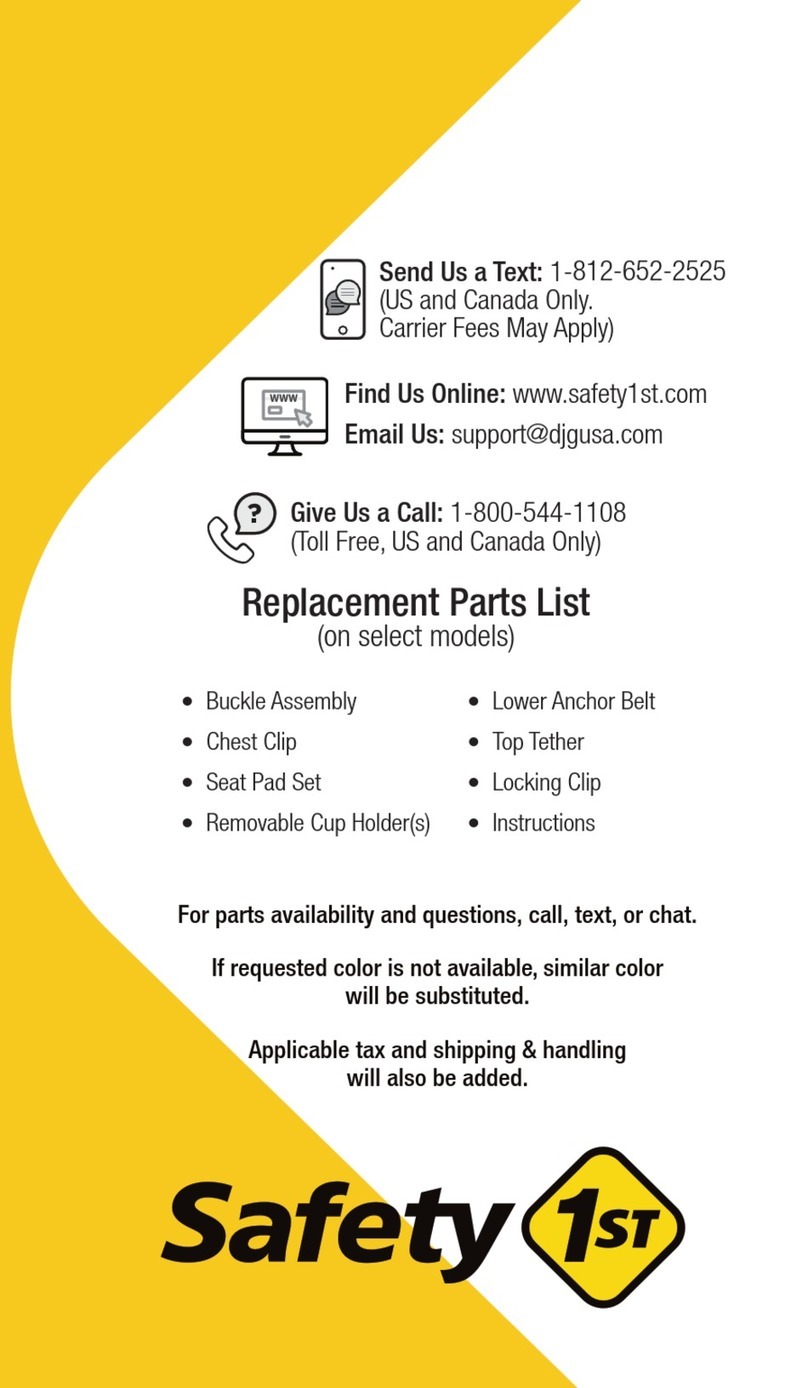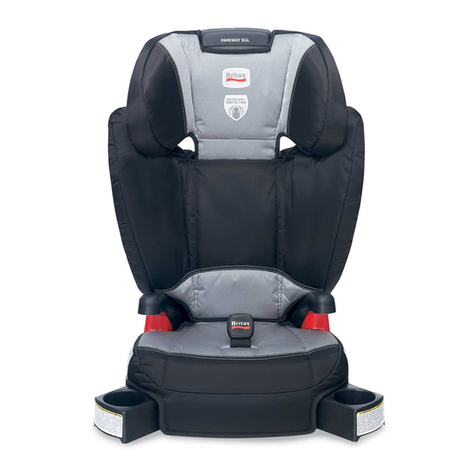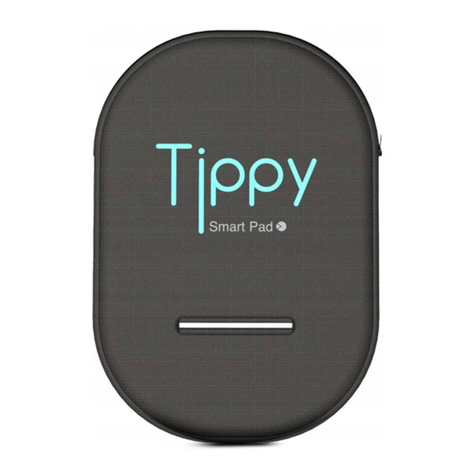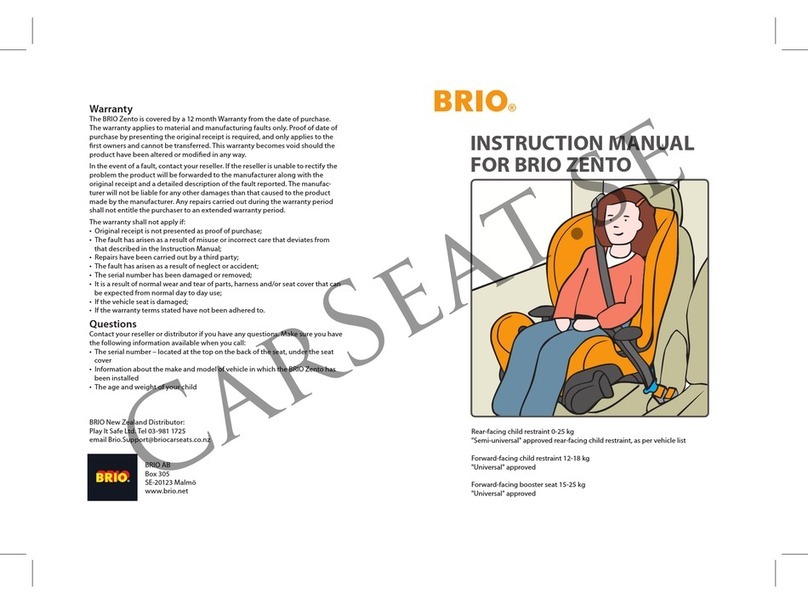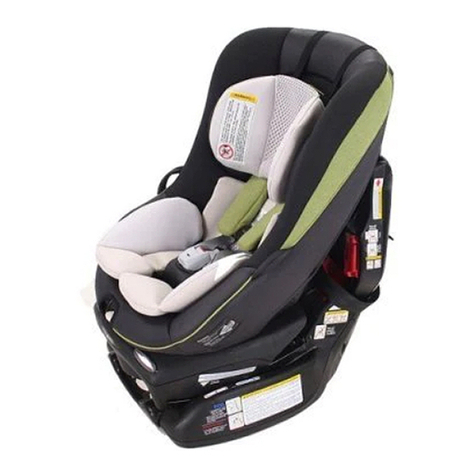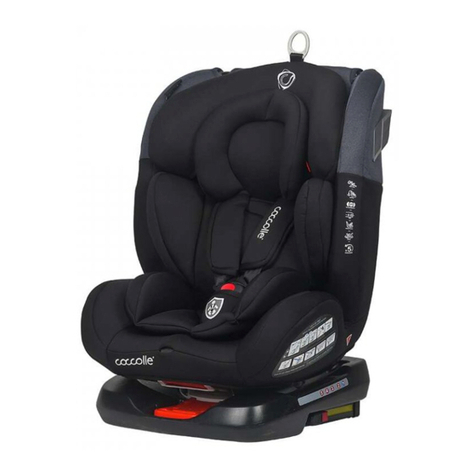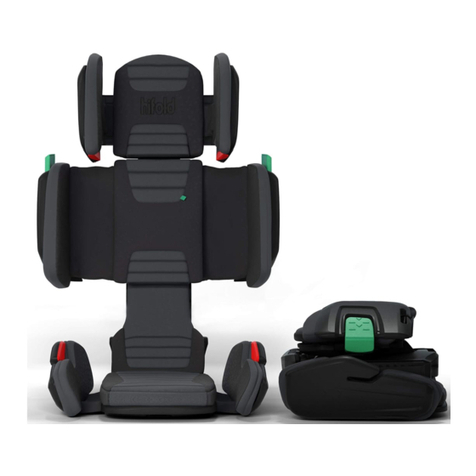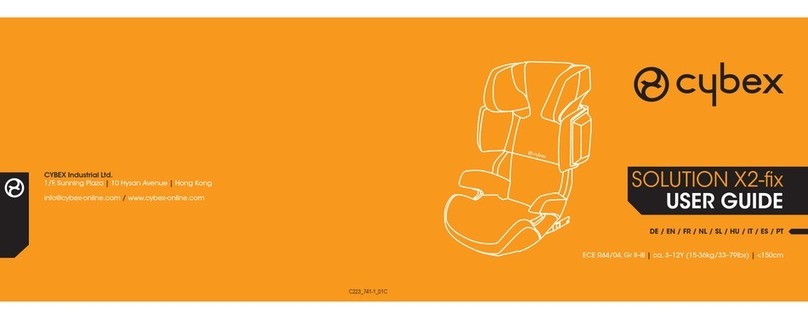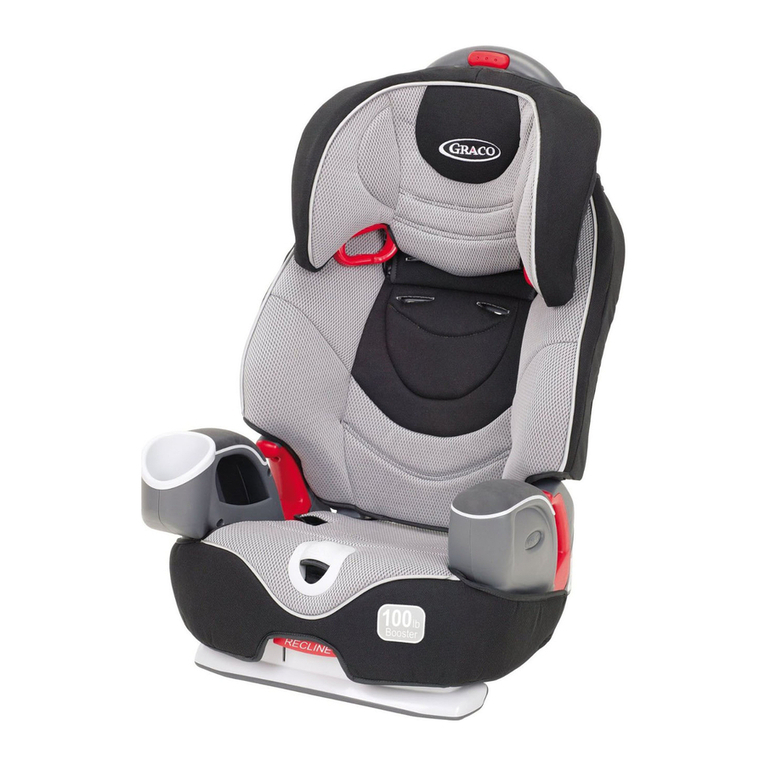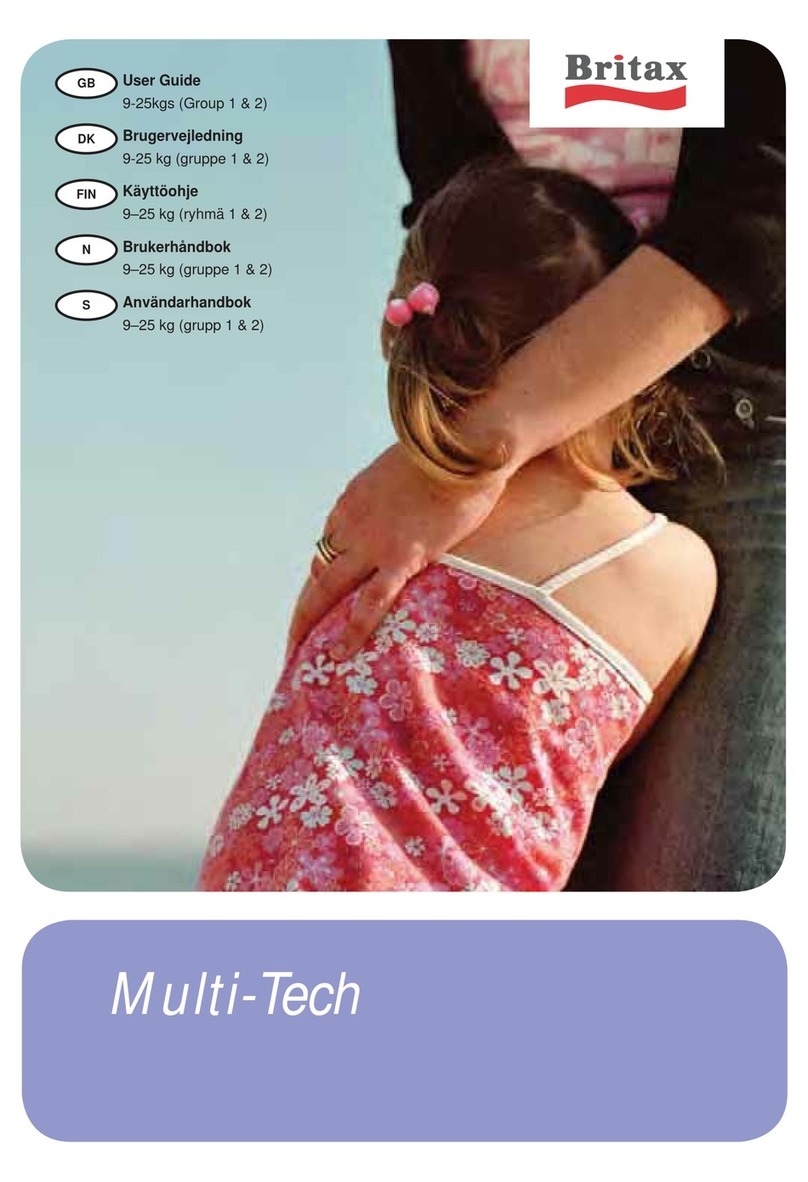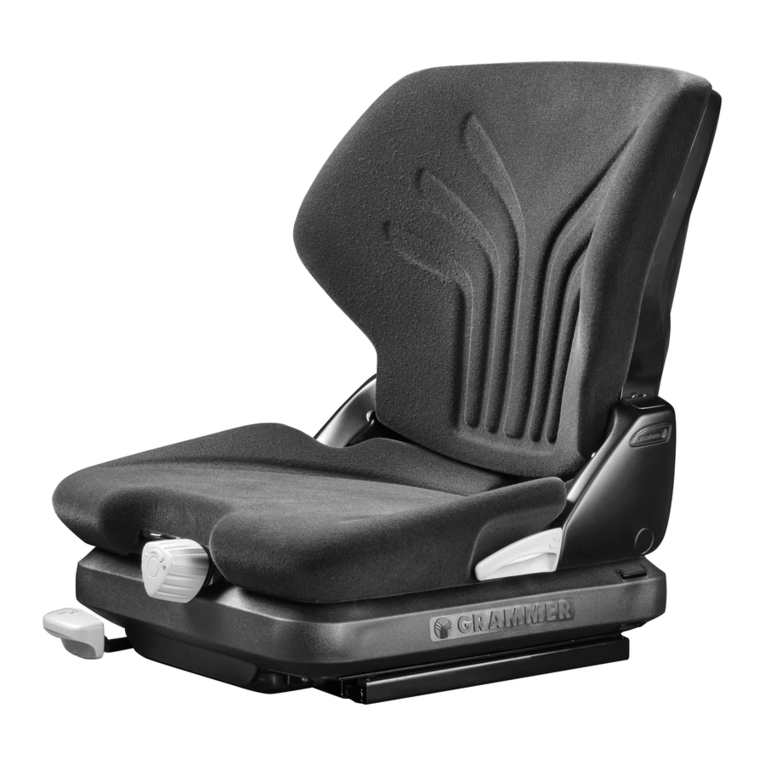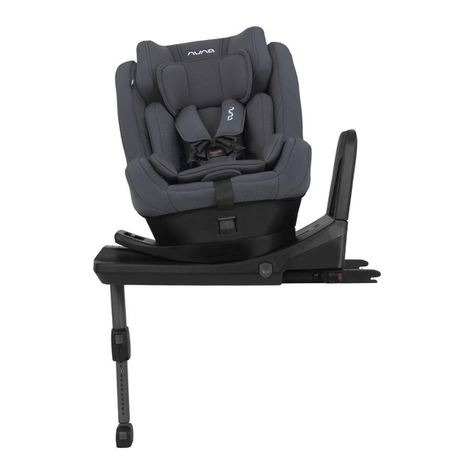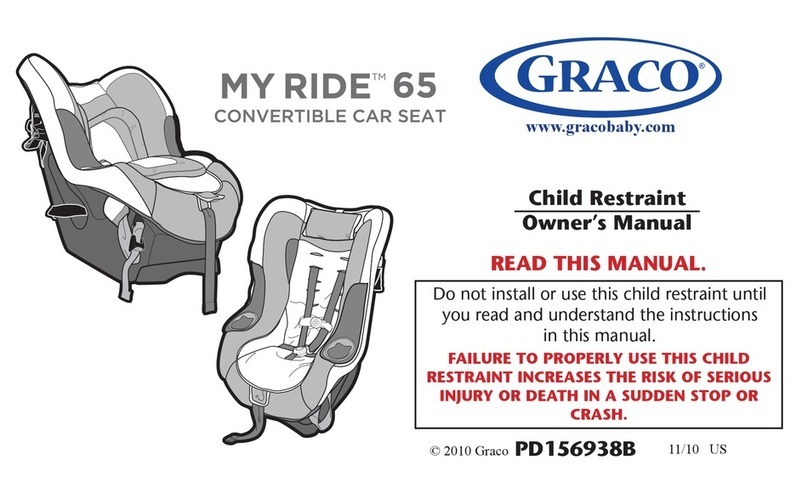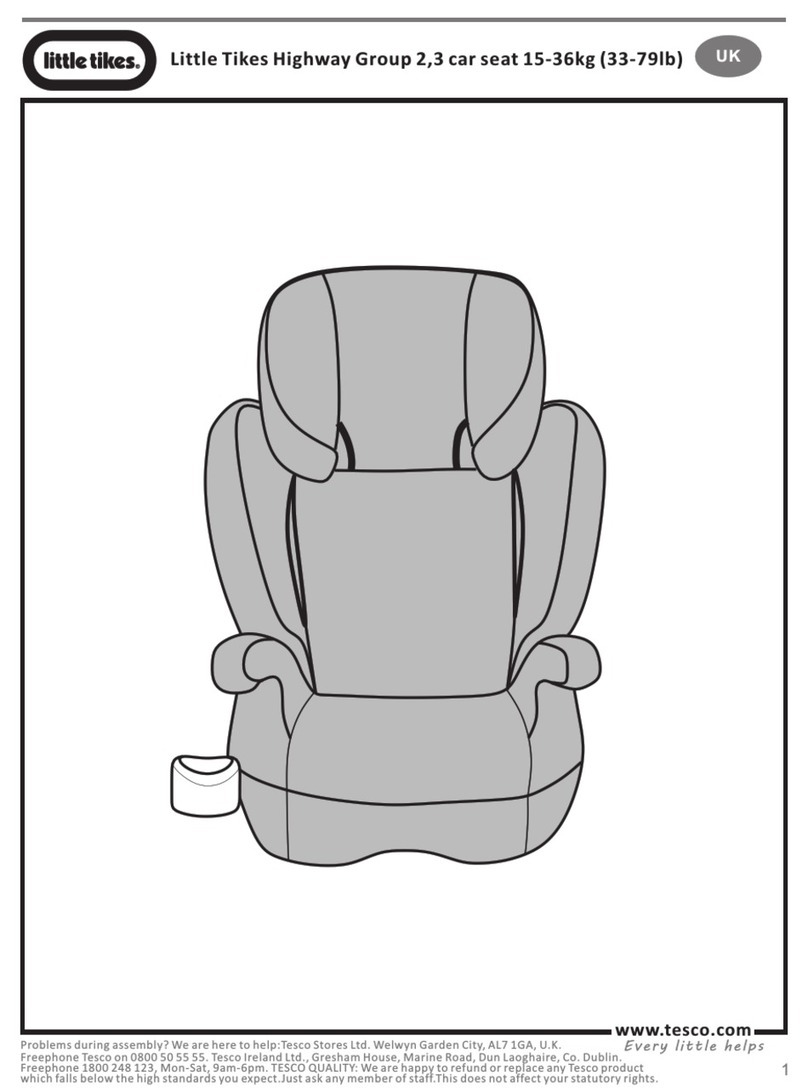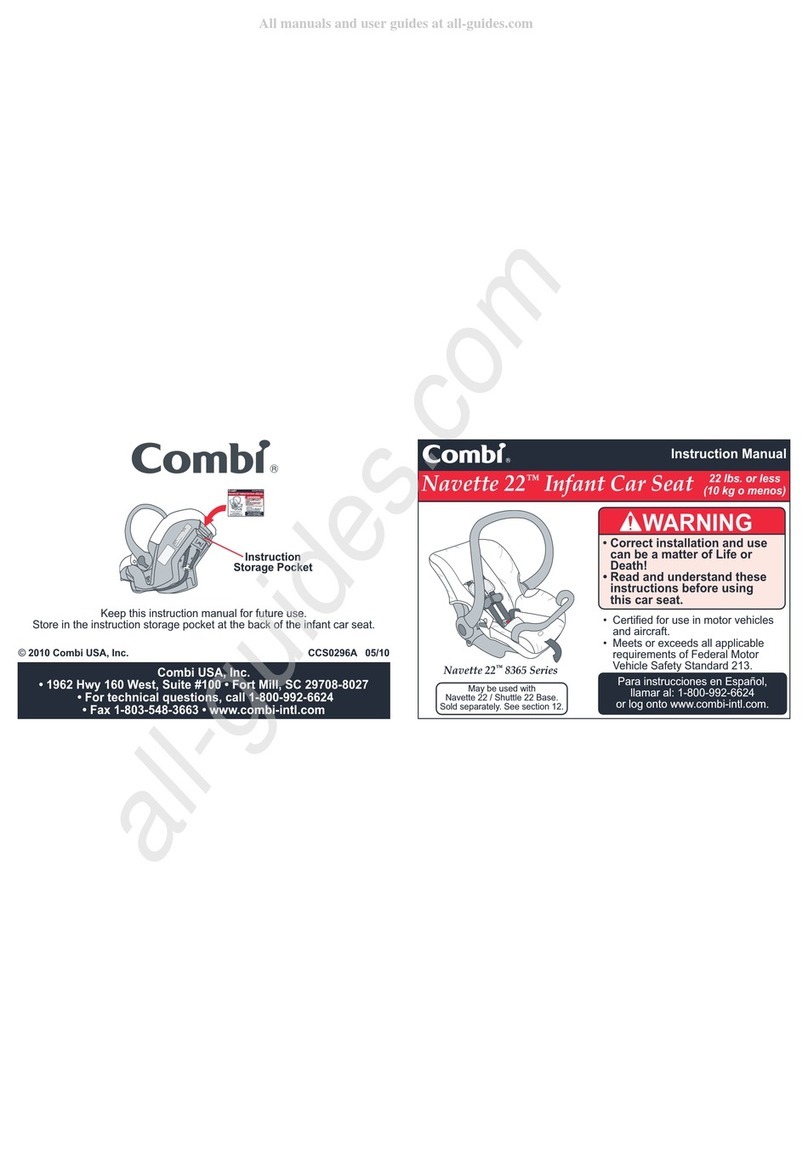
4
Rear-Facing Use Requirements
3
Measure your child’s weight and height
(do not guess) before choosing the car seat’s mode.
Your child’s height, weight, and age determine how the car seat should
be placed in the vehicle. Children vary widely in body size, shape,
and temperament—please consult your doctor before switching
between any types or modes of car seats within the limits and fit
requirements of the seat.
State Laws
Please be certain to follow your state’s laws regarding car seat use.
American Academy of Pediatrics Recommendations
Infants and Toddlers: Should ride in a rear-facing car seat as long as
possible, until they reach the highest weight or height allowed by their
seat.
Toddlers and Preschoolers: Once they are facing forward, children
should use a forward-facing car seat with a harness for as long as
possible, until they reach the height and weight limits for their seats.
School-Aged Children: Once they have outgrown their forward-facing
car seat, children should use a belt-positioning booster seat until the
vehicle’s lap and shoulder seat belt fits properly. This is often when
they have reached at least 4 feet 9 inches in height and are 8 to 12
years old.
Older Children: All children younger than 13 years should be re-
strained in the rear seats of vehicles for optimal protection.
Accessory Use (on select models)
REAR-FACING
4-35 lb (1.8-15.9 kg) and 32 in. (81.3 cm) or less in
height
Children under 1 year of age must ride Rear-Facing.
This car seat can only be used Rear-Facing.
Your child can remain in this car seat until they outgrow
any one of the following:
• Weight Limit: 35 lb (15.9 kg); OR
• Height Limit: 32 in. (81.3 cm); OR
• Rear-Facing Child Fit requirements, see page 6
Infant Insert
When using the infant insert, make sure
it does not cover your infant’s face in any
way.Remove the insert for older babies.
To remove infant insert, remove harness
straps from splitter plate.
Pull harness through the top slots and
remove the insert.
Reattach harness strap loops to the splitter
plate. See pages 7-8.
Reverse the order to install the head
pillow.
Harness Covers
Harness covers help provide comfort to the
neck.
If harness covers will not allow proper
positioning of the chest clip or interfere
with getting a tight enough fit for a smaller
baby, remove and do not use.
Store until child is large enough to use
these harness covers while maintaining a
properly fitting harness.
To remove harness covers, unhook the
harness strap from splitter plate, pull
harness strap out of the shoulder harness
slots and remove harness covers. Rethread
harness strap and attach the harness strap
loops to the splitter plate. See pages 7-8.



